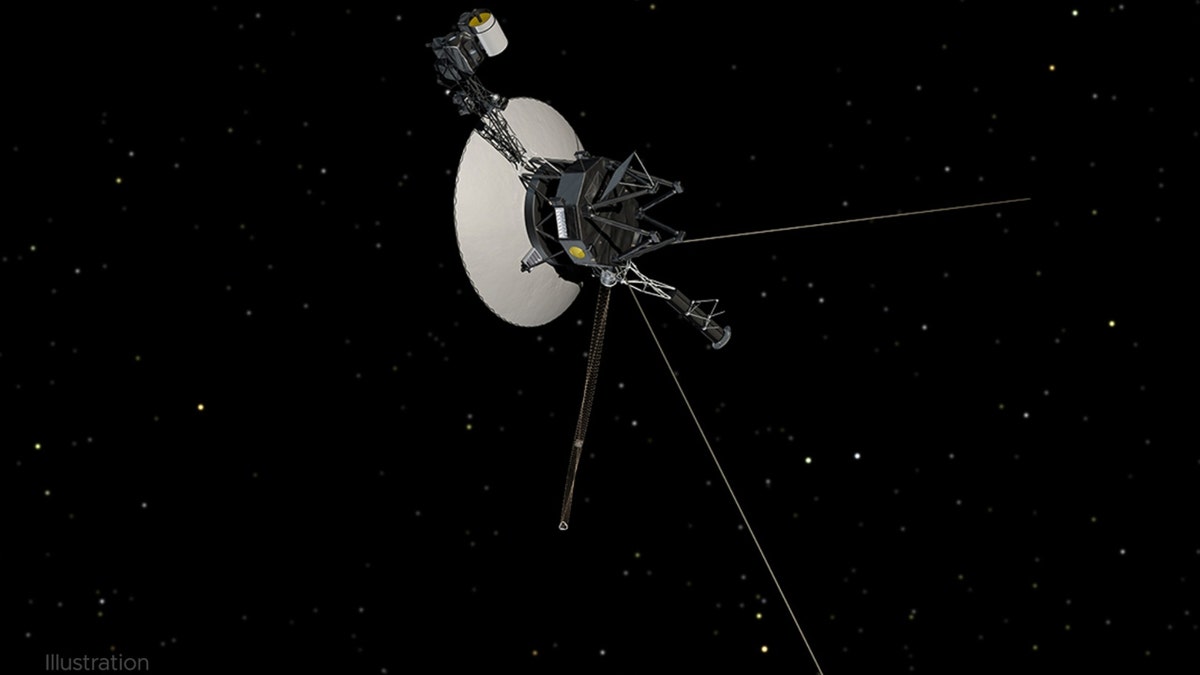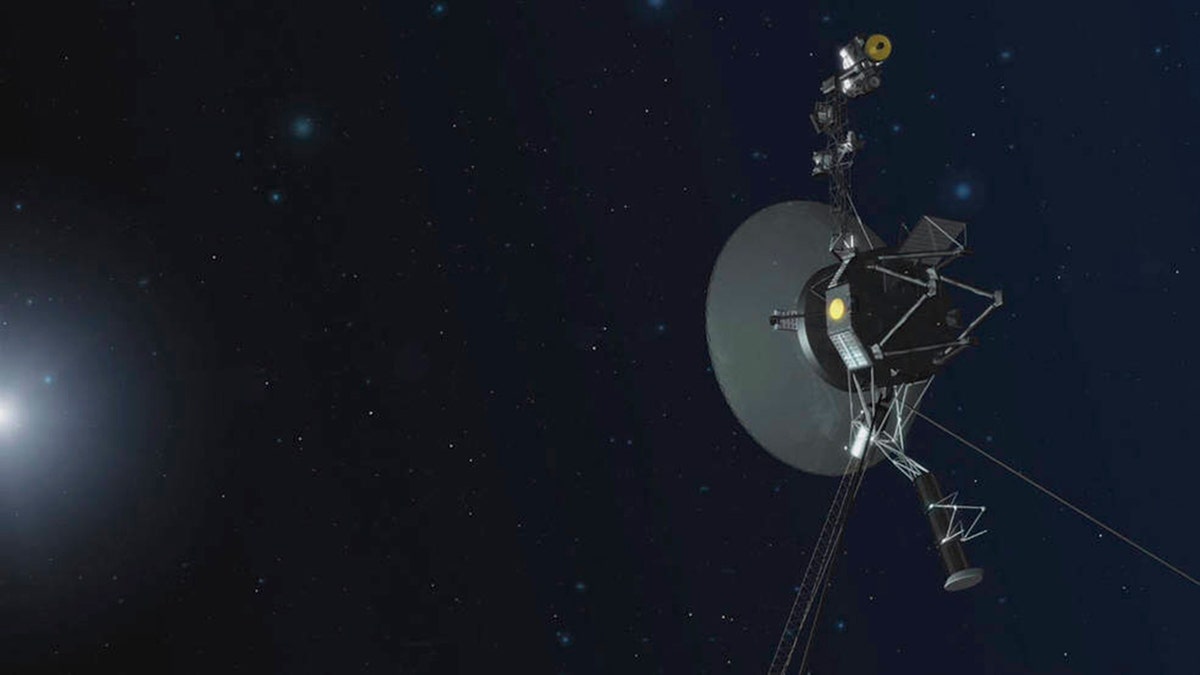NASA confirmed that after a hiatus for Voyager 1 in late October, the spacecraft had found its voice and resumed regular operations.
Voyager suddenly turned off its main radio transmitter, known as X-band, before turning on a much weaker S-band transmitter in October.
The interstellar spacecraft is currently about 15.4 billion miles from Earth, and the S-band has not been used for more than 40 years.
Communication between NASA and Voyager 1 was uneven at times, and switching to a lower band prevented the Voyager mission team from downloading science data and information about the spacecraft's health.
This artist's concept depicts NASA's Voyager 1 spacecraft traveling through interstellar space, or the space between stars, which it entered in 2012. (NASA/JPL-Caltech)
Earlier this month, the team was able to reactivate the X-band transmitter and resume collecting data from four operational scientific instruments aboard Voyager 1.
Now that data can be collected and communications have resumed, engineers are completing the few remaining tasks to return Voyager 1 to the state it was in before the problem occurred. One of the tasks is to reboot the system that synchronizes Voyager 1's three onboard computers.
The S-band was activated by the spacecraft's fault protection system when engineers activated the heater on Voyager 1. The fault protection system determined that the probe did not have enough power and automatically shut down systems that were not necessary to keep the spacecraft in flight to continue providing power to critical systems.
VOYAGER 1 DETECTED A HUMM IN INTERSTELLAR SPACE: REPORT

NASA's Voyager 1 spacecraft, shown here, has been exploring our solar system since 1977 along with its twin, Voyager 2. (NASA/JPL-Caltech)
But the probes also turned off all non-essential systems except for scientific instruments, NASA said, turning off X-band and activating S-band, which uses less power.
Voyager 1 has not used S-band to communicate with Earth since 1981.
NASA PUBLISHES NEVER BEFORE ANNOUNCEED PHOTOS OF THE RAVIOLI MOON ORBITING SATURN

This illustration provided by NASA shows the spacecraft farthest from Earth, Voyager 1. The Jet Propulsion Laboratory in Southern California announced this week that Voyager 1's four science instruments are back online after a technical problem. (NASA via AP, file)
Voyager 1's odyssey began in 1977, when the spacecraft and its twin, Voyager 2, were launched on a journey to the solar system's gas giant planets.
Sending back dazzling postcards of Jupiter's giant red spot and Saturn's shimmering rings, Voyager 2 went hopscotching. Uranus and Neptune. Meanwhile, Voyager 1 used Saturn as a gravitational slingshot to fly past Pluto.
CLICK HERE TO GET THE FOX NEWS APP
Each spacecraft carries 10 scientific instruments, and four are currently being used to study particles, plasma and magnetic fields in interstellar space, according to NASA.








